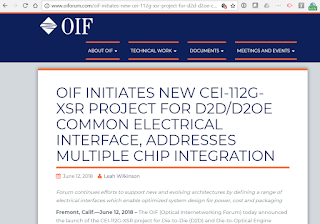With a goal of delivering an open, programmable platform that spans the entire network, from campus to data center, branch to edge, Cisco released new developer capabilities across its intent-based networking platform. This includes new developer tools and open APIs into Cisco DNA Center — the command and control center for campus, branch and edge intent-based networks. The network-wide APIs allow developers to program the system, tapping into all of the analytics and insight the network can provide.
 "Intent-based networking represents the next generation of open, IP-based systems that we've seen can change the actual fabric of society," said David Goeckeler, executive vice president and general manager of Cisco's Networking and Security Business. "Cisco is building an open architecture that will power an ecosystem to accelerate intent-based networking innovation. Already, our customers and partners are creating value from their networks in ways they thought weren't possible as recently as one year ago."
"Intent-based networking represents the next generation of open, IP-based systems that we've seen can change the actual fabric of society," said David Goeckeler, executive vice president and general manager of Cisco's Networking and Security Business. "Cisco is building an open architecture that will power an ecosystem to accelerate intent-based networking innovation. Already, our customers and partners are creating value from their networks in ways they thought weren't possible as recently as one year ago."
Cisco is also announcing three new developer initiatives to fuel its innovation ecosystem:
A significant milestone -- Cisco's DevNet now has 500,000 developers enrolled.
 "Intent-based networking represents the next generation of open, IP-based systems that we've seen can change the actual fabric of society," said David Goeckeler, executive vice president and general manager of Cisco's Networking and Security Business. "Cisco is building an open architecture that will power an ecosystem to accelerate intent-based networking innovation. Already, our customers and partners are creating value from their networks in ways they thought weren't possible as recently as one year ago."
"Intent-based networking represents the next generation of open, IP-based systems that we've seen can change the actual fabric of society," said David Goeckeler, executive vice president and general manager of Cisco's Networking and Security Business. "Cisco is building an open architecture that will power an ecosystem to accelerate intent-based networking innovation. Already, our customers and partners are creating value from their networks in ways they thought weren't possible as recently as one year ago."Cisco is also announcing three new developer initiatives to fuel its innovation ecosystem:
- DevNet Ecosystem Exchange -- an online portal for finding and sharing an application or solution built for Cisco platforms. It contains over 1,300 solutions.
- DevNet Code Exchange gives developers a place to access and share software to quickly build next-generation applications and workflow integrations. A curated list of sample code, adaptors, tools, and SDKs is available on GitHub and written by Cisco and the DevNet community. Code Exchange spans Cisco's entire portfolio and is organized according to Cisco platform and product areas.
- DevNet DNA Developer Center is a one-stop-shop for developers to build applications and integrations on the DNA Center platform. It provides comprehensive resources, capabilities, use cases and learning materials for developers.
A significant milestone -- Cisco's DevNet now has 500,000 developers enrolled.


















